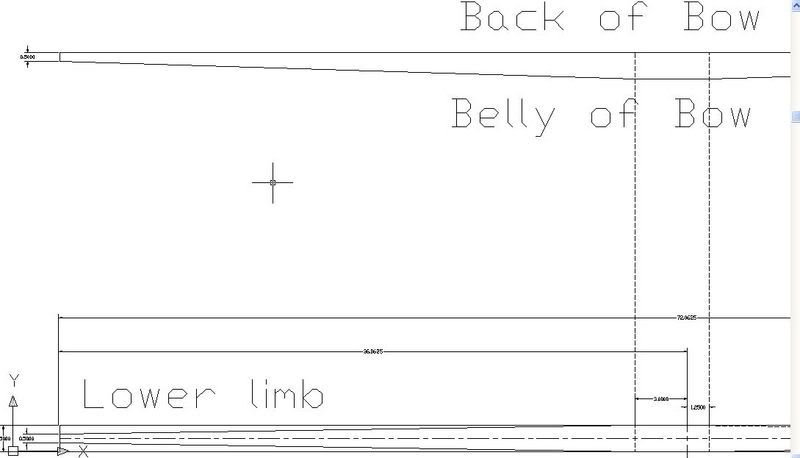smj
Forum Guide
  Traditional Council
Traditional Council
Posts: 1,819
|
Post by smj on Mar 2, 2008 21:02:41 GMT -5
stave - that piece of wood form which you will make your bow, a quartered and roughed out chunk of former log.
crown - This is the outer most ring that will become the back of your bow. One side, that which is towards you when you hold the bow to shoot, is the belly. That side away is the back. The crown is the radius of the back, how much curve there is to it. A large log will give you a bow with an almost flat back. A thin tree will give you a bow with a very curved back. The crown is found by setting the bow back up, towards the sky. It will have some curve to it, you want to find the center of that curve, which become the centerline tip to tip of the bow. It may jog to the side here and there, it needs to be followed. If dropped 2 drops of water, one on either side of the very crown, each drop of water would go to opposite sides of the future bow limb. Kind of like the great divide of the back of the bow.
|
|
|
|
Post by huntingdude16 on Mar 3, 2008 22:20:46 GMT -5
Hmm, still a little bit confused as to the crown. Do you have some sort of visual aid?
Sorry to be difficult.....
|
|
smj
Forum Guide
  Traditional Council
Traditional Council
Posts: 1,819
|
Post by smj on Mar 4, 2008 1:35:32 GMT -5
I can make a picture up for you. Let me just add that the crown is the growth ring that you have selected to serve as the back of your bow. It has a curvature that results from the diameter of the tree that the stave came from. This curvature then starts on one side of the limb, proceed over the back of your bow in the form of that last growth ring to the other side of the limb. It is convex in shape. The belly of a growth ring appears concave. Finding the crown simply means to find the high line from tip to tip along the back of the bow.  I have a pattern for you to look at - from Howard Hill. As to the twist in your stave - it looks like a bend in the middle? Or do you refer to the way the crown drops on the end? For the bend in the middle, you don't have to use steam to heat the wood. It is handy though as you need to heat the wood until it is to hot to handle - but not burning or smoking. Then you can bend it a bit, let cool. I have done this with hickory, it worked well for me. I used a hot air gun on it. But it takes a while and it is easy to start to burn the wood, which is bad. Some say that the only way to bend wood is when it is green. Once dried, that heating the wood can lead to damage to the cellular structure of the wood. However, I have done this with hickory a few times and not noticed any problems. Steam is preferred by most simply because it transports heat very well, and you can set up a steamer and walk away from it without worry that you will over-heat the wood. If you have a stave that is dry, it will wet it and then you'd have to dry it again. Anyway, dry heat works, Howard Hill says dry heat, hot enough so that you can not handle the wood, but does not give us insights to green wood or dry wood. Howard believed in a 72" bow, and a 28" arrow. If take an inch off of the arrow, then take double that off of the length of the bow. He also says that if you need a longer draw, change your form so you can shoot a 28" arrow. I guess, back before carbon he could not find arrows that were stiff enough to tune right for longer draws... Let's see if these can be read -  His bow was 1.5" diameter, change yours to 1 3/4 inches. Find the middle of your 72" length - mark the back 1.25" to one side of the centerline, and 3" the other side. This then becomes the grip area. The shorter offset line is on the upper limb side, the 3" offset side becomes the lower limb. The back of the bow tapers as the limb goes out to the tip, ending with a 1/2 inch width, spaced evenly either side of the bows tip to tip centerline. The belly of the bow also tapers, but it is a one-sided taper. Starting at the edges of the defined grip section, taper the belly out to the tip leaving a 1/2 inch thickness of wood at the tip.    I think this to be the more simple bow pattern you could do. However, I have another pattern that is also fairly easy to set up. But not this posting! |
|